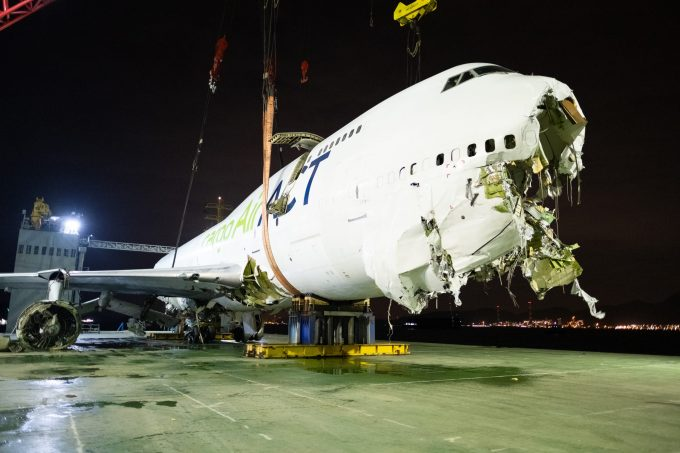A startling new detail has emerged from the ongoing investigation into last month’s Air ACT cargo plane crash in Hong Kong, with officials confirming that one of the aircraft’s engines unexpectedly surged forward after touchdown—an anomaly that may have triggered the deadly runway disaster.
The Boeing 747, arriving from Dubai on October 20, veered off the runway seconds after landing at Hong Kong International Airport, slamming into a security patrol vehicle and sending both the jumbo jet and the car plunging into the sea. Tragically, two airport security workers in the patrol car died on the spot, while all four crew members on board the cargo aircraft escaped without injury.
In a preliminary update, the Transport and Logistics Bureau revealed that a flight deck examination showed a puzzling configuration:
Engines 1, 2, and 3 had their thrust levers fully closed, with reverse thrust deployed at maximum—exactly what should happen during a routine landing.
Engine 4, however, was found with its thrust lever pushed fully forward, delivering unexpected acceleration at the worst possible moment.
Investigators say the bizarre thrust surge on the aircraft’s right-most engine could have caused the 747 to lurch out of alignment and skid uncontrollably off the runway.
Authorities now aim to determine why the Number 4 thrust lever was in that position—whether it was a mechanical malfunction, an electronic glitch, or a flight deck action taken under duress. The inquiry will also examine whether other hidden failures contributed to the crew’s loss of control.
As Hong Kong awaits the next update, the mystery surrounding Engine 4 looms large—raising urgent questions about what went wrong in those final, critical seconds on the runway.




